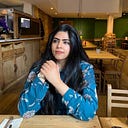FMP/ Migrant Integration — 05. Designing for a Social Context
At this point in the design process, it became imperative to reflect back for moving ahead. I tried to comprehend the meaning of design applied in the context of improving social life of migrants. As the design outcome would not be materialistically derived, it became tricky to generate clarity on how to proceed about next. Suggested by John earlier, I began going through literature available in the discipline of social design. But to my surprise, I was left wandering up and down the screen searching for academic papers tackling this subject. Since this field is relatively a new one, it was found being included under texts discussing topics such as service design, management science and human-computer interaction.
What is ‘Design’ in Social Design
Then I came across a paper penned by Cameron Tonkinwise titled as ‘Is Social Design a Thing’ which elaborately discussed what kind of designing would entail in the design for social change. He proposed that like prototypes are rhetorical devices for material things, design in the context of complex societal challenges is a form of a social activity. It meant for me that I would be needing to pursue a process of developing forms and mechanisms that could activate a social activity for people — (1).
Secondly, the author echoed with the argument presented by Victor Papanek (1971) saying that social designers have an obligation of lending their skills to the segment of population who normally cannot afford to be design clients. In this way, people of society are characterized as users of those services being enabled by material/non-material products that accelerate progress towards ideal ways of living — (2).
Lastly, Tonkinwise asserted that social design is mostly implemented for situations with ‘unmet needs’; gaps which are not addressed by commercial markets or government services. Therefore, here design would be playing the role of facilitating social innovation for the well-being of communities — (3).
What is ‘Social’ in Social Design
Having gathered an idea of how design is meant to serve in a social context, I started to look more into the literature on the social aspect of integration. It was crucial to understand the various levels of social mixing that occur for migrants in a host society as well as determining the facets of life it had an impact on.
For many years, research has focussed on establishing a correlation between social integration of migrants and their socio-economic advancement, the notion of which is referred to as ‘social capital’ (Bourdieu, 1986; Portes, 1998). It is only recently that attempts have been made at studying the aspect of emotional adjustment in migrant settlement. A concept borrowed from the field of economics called as ‘embedding’ has lately been contextualised by Ryan and Mulholland (2015) in respect to migrant integration, defining the condition of ‘embeddedness’ being attained by “social relationships that foster a sense of rootedness and integration in the local environment”.
However, the knowledge gained now afforded me a better understanding of what in the ‘social’ of social design is that which needs to be approached in this project for facilitating migrant integration. When Abbas and Fatma showed the need for being fulfilled socially, I wasn’t able to gauge whether it was for improving opportunities in job market by networking or promoting psychological well-being by forming good bonds with people. It called for a deeper enquiry to be put up with migrants.
Practice Review
Later in the week, I had an online tutorial organised with Eva Verhoeven of IDVC. She supplemented me with some examples of social design being practiced in the real world. One of them was about The Refugee Journalism, a project undertaken at the LCC to help refugees and exiled journalists in restarting their career in the UK. It is done by conducting workshops and mentoring sessions for the refugees.
The other one referred to a company in London called Assemble — it engages in a range of multi-disciplinary projects merging architecture and art to implement design led social solutions. The one that inspired me in particular was the Granby Winter Garden restoration programme. In that, they built an experimental architectural ceramic workshop area and an indoor garden in the middle as shared spaces for community meetings.
Research on Research Methods
Knowledge about the fundamentals of social design and social integration combined with practice review provided me effective guidance on visualising the direction of my project’s outcome.
The next step was to figure out other research methods I could use in performing further exploratory research and testing ideas, if any. For the same, I thoroughly went through all the methods given in the book ‘Universal Methods of Design’ written by Bella Martin and Bruce Hanington, and made a list of the selected ones as shown below.
Scoping the Project
Doing so, I came across the method of making territory maps that represent shared focus of the design team during the ‘define’ stage. As I had been working individually, I adapted the method to illustrate the design landscape that could be explored within the scope of this project — creating speculative visions based on the knowledge gained so far.
Bibliography
ASSEMBLE (2019) Granby Winter Garden. Available at: https://assemblestudio.co.uk/projects/granby-winter-gardens.
Design For Change (2015) What is Social Design? by IDEO. Available at: https://www.youtube.com/watch?v=QSs397-JF-Q (Accessed: 27 October 2021).
Manzini, E. (2015) Design, When Everybody Designs. The MIT Press. Available at: https://direct.mit.edu/books/book/4460/Design-When-Everybody-DesignsAn-Introduction-to.
Martin, B. and Hanington, B. (2019) Universal Methods of Design Expanded and Revised. Rockport Publisher.
Ryan, L. et al. (2008) ‘Social Networks, Social Support and Social Capital: The Experiences of Recent Polish Migrants in London’, Sociology, 42(4), pp. 672–690. doi:10.1177/0038038508091622.
Tahhan, A. (no date) ‘The Refugee Journalism Project’. (The Story Behind Integrate That!). Available at: https://www.refugeejournalismproject.org/2020/06/12/podcast-integrate-that/.
Tonkinwise, C. (2019) ‘Is Social Design a Thing’, in The Social Design Reader. Bloomsbury Publishing, pp. 9–16.
